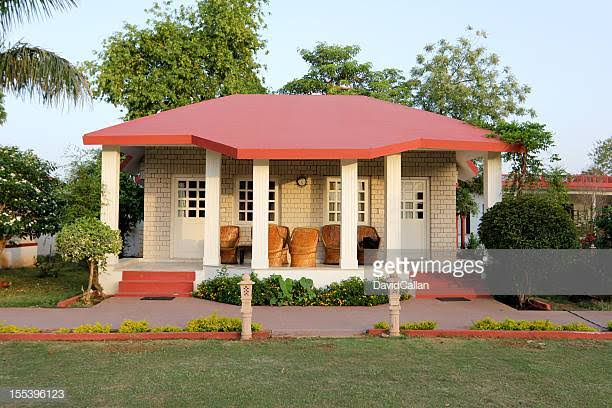
The elements involved in the house construction are as follows.
1. Foundation
2. Plinth
3. Walls and columns
4. Sills, lintels and chejjas
5. Doors and windows
6. Floors
7. Roofs
8. Steps, stairs and lifts
9. Finishing work
What is foundation ? and its principles.
Foundation is the vital part of the building. Building activity starts with excavating the ground for foundation and then building it. It is the lowest part of the building.which transfers the entire load of the of the building to the ground.
Function of the foundations
Distribute the load from the structure to soil evenly and safely.
To anchor the building to the ground so that under lateral loads building will not move
It prevents the building from overturning due to lateral forces.
It gives level surface for the construction of super structure.
Plinth :
The portion of the wall between the ground level and the ground floor level is called plinth. It is usually of stone masonry or RCC . If the foundation is on piles, a plinth beam is cast to support wall above floor level.
At the top of plinth a damp proof course is provided. It is usually 75 mm thick plain concrete course.to maintin the cohesion of concrete and brick work.
the function of the plinth is to keep the ground floor above ground level, free of dampness. Its height is generally 150 mm above the road level.. It is required that plinth level is at least 150 mm above the road level, so that connections to underground drainage system can be made.
Walls and Columns :
The function of walls and columns is to transfer the load of the structure vertically downwards to transfer it to foundation.
Apart from this wall performs the following functions also:
It encloses building area into different section and provides privacy.
It provides safety to the inmates.
It keeps the building warm in winter and cool in summer
Sills , Lintels and Chejjas:
A window frame should not be directly placed over masonry due to undulations in he brickwork. It is placed over 50 mm to 75 mm thick plain concrete course provided over the masonry. This course is called as sill.
Lintels are the R.C.C. or provided over the door and window openings to transfer the load transversely so as to see that door or window frame is not stressed unduly. The width of lintels is 140 mm beyond the opening of wall while thickness to be provided depends upon the opening size.
Chejja is the projection given outside the wall to protect doors and windows from dripping of the rainwater inide.. They are usually made with R.C.C.
The projection of chejja varies from 600 mm to 800 mm. Sometimes drops and dripmoulds are also provided to chejjas to improve acsethetic look and also to get additional protection from sun and rain.
Doors and Windows:
The function of a door is to give access to different rooms in the building and to deny the access whenever necessary. Number of doors should be minimum possible. The size of the door should be of in such a way it should facilitate the movement of the largest object easily.
The main purpose of the window are to provide enough light and ventilation in the rooms.. They are generally located at a height of 0.75 m to 0.9 m frohe m the floor level.it might vary the type of windows are provided such as French windows, full windows etc.
as per the government norms the windows should be 15 to 20% of the floor area.
Floors :
Floors are the important component of a building. They give working/useful area for the occupants. The ground floor is prepared by using rubble packing etc and is well compacted.
A lean concrete of M15 of 100 mm thick is laid over th compacted surface.. Then floor finishing is done as per the owner choice suvch as tiling, tremix, ips etc..
Roof :
Roof is the top most portion of the building which provide top cover to the building. It should be leak proof. Sloping roof like tiled and A.C. sheet give leak proof cover easily. Which wont give the choice of additional floors,
Tiled roof give good thermal protection. Flat roofs give provision for additional floors. Terrace adds to the comfort of occupants. Water tanks can be easily placed over the flat roofs.
Or alternatively you can cast the rcc slab which enable to construct addition floors.floor slabs are to be properly designed and executed.
Step, Stairs and Lifts :
Steps give access from ground level to ground floor level. They are required at doors in the outer wall. 250 to 300 mm wide and 150 mm rise is ideal size for steps. In no case the size of two consecutive steps be different.
Number of steps required depends upon the difference in the levels of the ground and the floor. Stairs give access from floor to floor. They should consists of steps of uniform sizes.this can be done with rcc, structural steel, wood etc.
In all public buildings lifts are to be provided for the conveniences of old and disabled persons. In high rise building lifts are mandatory. Lift is to be located near the entrance. Size of the lift is decided by the number of users in peak hours. Lifts are available with capacity 4 to 20 persons.
Finishing :
Bottom portion of slab (ceiling), walls and top of floor need smooth finishing with plaster. Then they are provided with white wash, distemper or paints or tiles. The function of finishing work is:
(a) Give protective cover
(b) Improve aesthetic view
(c) Rectify defective workmanship
(d) Finishing work for plinth consists in pointing while for floor
